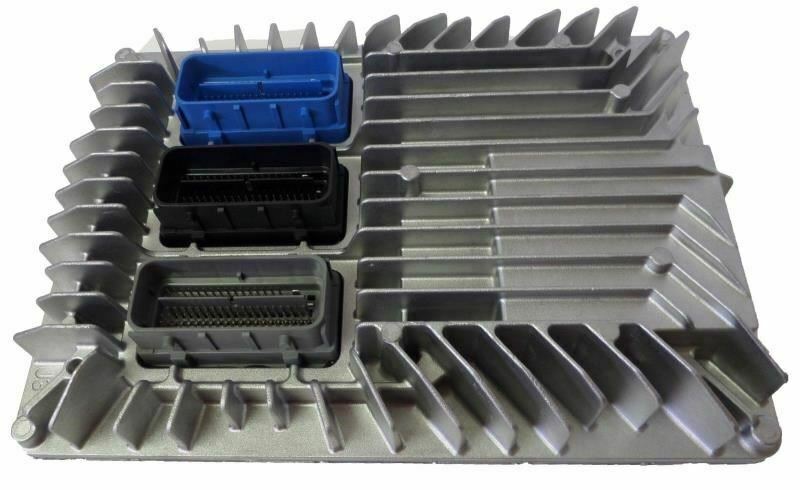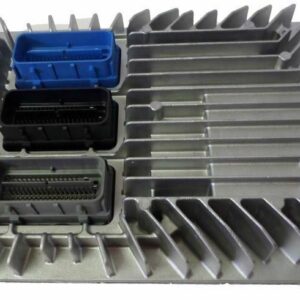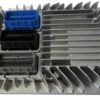Restore Your Vehicle’s Brain and Get Back on the Road
Is your 2017 GMC Acadia or other GM vehicle acting erratically? Stalling, refusing to start, or flashing a persistent Check Engine Light can often point to a single culprit: a failing Engine Control Module (ECM). As the central computer, the ECM manages everything from fuel injection and spark timing to transmission shifting. When it falters, your vehicle’s performance and reliability suffer dramatically. This isn’t just an inconvenience; it’s a critical failure that needs a dependable solution.
This isn’t just a replacement part; it’s a complete, ready-to-install solution. We take a genuine GM ECM (compatible with part numbers 12667002, 12666070, and 12667189) and flash it with the latest, most stable software updates directly from GM. By programming it to your vehicle’s specific Vehicle Identification Number (VIN) before it ships, we eliminate the need for an expensive trip to the dealership for programming. You get a module that is truly plug-and-play, designed to restore factory performance and clear frustrating fault codes.
From the Diagnostic Bay: The Ghost in the Machine
I remember a 2017 Traverse that came into the shop with a truly baffling issue. The owner complained of random stalling at red lights and occasional hard shifts, but there were no consistent fault codes—just a generic U0100 ‘Lost Communication with ECM’ that would appear and disappear. We checked wiring harnesses, grounds, and power feeds for days. Everything seemed fine. On a hunch, I suggested we try a known-good ECM. We installed a pre-programmed module, and the ghost was gone. The original ECM had an internal processor fault that only occurred under specific thermal conditions, making it nearly impossible to diagnose with a scanner. This experience taught me that for intermittent electronic gremlins, a reliable 2017 Acadia ECM is often the most direct fix.
Is Your Vehicle Showing These Symptoms of ECM Failure?
A failing engine computer can manifest in numerous ways. If you’re experiencing any of the following, a faulty ECM is a likely cause. Look out for these common signs:
- ✔ Persistent Check Engine Light (CEL) that won’t clear.
- ✔ Diagnostic Trouble Codes (DTCs) related to internal processor failure, such as P0601, P0606, or P062F.
- ✔ Unexplained drops in fuel economy.
- ✔ Engine misfires, stumbling, or rough idling.
- ✔ Vehicle enters ‘limp mode’ with reduced power.
- ✔ Complete no-start or intermittent starting issues.
- ✔ Problems with the automatic transmission shifting smoothly.
- ✔ Communication errors with other vehicle modules (U-codes).
A Straightforward Guide to Installation
Installing your new 2017 Acadia ECM is a manageable job for a confident DIYer. The key is taking your time and ensuring all connections are secure. While locations vary slightly by model, the general process is the same.
- Safety First: Always disconnect the negative terminal from your vehicle’s battery and wait a few minutes to ensure the system is fully discharged.
- Locate the ECM: On many of these models (like the Acadia, Traverse, and Enclave), the ECM is mounted behind the fan shroud. On others (like the Regal or Equinox), it’s in the LH (driver’s side) engine compartment. Consult a vehicle-specific guide if you’re unsure.
- Disconnect the Connectors: Carefully unclip the wiring harness connectors from the old ECM. These connectors have locking tabs; do not force them. Inspect the pins for any corrosion or damage.
- Remove the Old Module: Unbolt the old ECM from its mounting bracket. Keep the mounting hardware, as you will need it for the new module.
- Install the New ECM: Mount your new, pre-programmed ECM onto the bracket and secure it with the original hardware.
- Reconnect and Secure: Firmly plug the wiring harnesses into the new module until they click into place. Ensure the locking tabs are fully engaged.
- Final Step: Reconnect the negative battery terminal. The vehicle may require a security relearn procedure, which typically involves turning the key to the ‘ON’ position for 10-15 minutes. Start the engine and check for proper operation.
Verified Vehicle Compatibility
This module is a direct-fit replacement for the following vehicles, ensuring proper function and communication. Please provide your VIN upon purchase to guarantee correct programming for your specific model and options.
- 2017 Cadillac XTS: (3.6L, VIN 3)
- 2018-2019 Cadillac XTS: (3.6L, VIN 3)
- 2017 Chevrolet Caprice: (3.6L)
- 2017 Chevrolet Traverse: (Located behind fan shroud)
- 2017-2019 Chevrolet Impala
- 2017 Chevrolet Equinox: (Located in LH engine compartment)
- 2017 GMC Acadia: (Limited models, VIN J – 11th digit, located behind fan shroud)
- 2017 GMC Terrain: (Located in LH engine compartment)
- 2017 Buick Enclave: (Located behind fan shroud)
- 2017 Buick Regal: (Located in LH engine compartment)
- 2017 Buick Verano
Choosing this pre-programmed 2017 Acadia ECM is the most efficient way to solve complex electronic issues, restoring the reliability and performance you expect from your vehicle.
Frequently Asked Questions
Why do I need to provide my VIN?
Your VIN (Vehicle Identification Number) is essential. It allows us to load the exact GM-specified software for your vehicle’s engine, transmission, and options. This ensures seamless communication between modules and avoids compatibility issues, making the installation truly plug-and-play.
Is this a simple plug-and-play installation?
Yes! Because we program the module to your VIN before shipping, you will not need to take it to a dealership for programming. In most cases, you can install it yourself. Some vehicles may require a simple security or key relearn procedure, which can be done without special tools.
Will this fix my ‘Check Engine’ light?
If the Check Engine Light is caused by an internal failure of the ECM (like codes P0601 or P0606), then this part is the correct fix. However, the light can be triggered by many other sensors or components. It’s always best to have the codes professionally diagnosed to confirm the ECM is the root cause.
What is the difference between an ECM and a PCM?
The terms are often used interchangeably. ECM stands for Engine Control Module, while PCM stands for Powertrain Control Module. A PCM controls both the engine and the transmission, while an ECM typically just controls the engine. For most modern GM vehicles like this, the module functions as a PCM, but the term ECM is still widely used.
Do I need to send my old ECM back (core charge)?
This listing does not require a core return. You can keep your old module, though we always recommend recycling old electronics responsibly.



